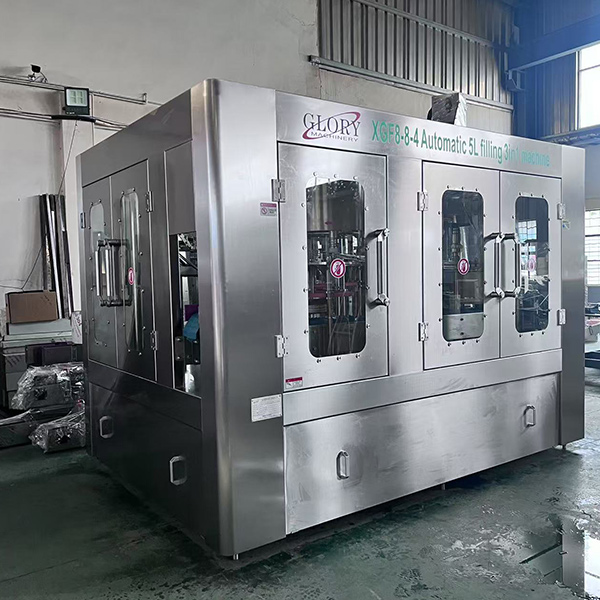Methods to improve the filling accuracy of 5L water filling machine
I. Optimization of equipment components
(I) Upgrading filling valves
Traditional filling valve seals are prone to wear and tear, causing liquid leakage. New ceramic or high-strength alloy valves can be used, which have excellent sealing and wear resistance and can significantly reduce dripping. For example, a well-known brand of ceramic valve core valve has a filling accuracy of ±10 ml under normal use, which is far superior to ordinary rubber sealing valves. In addition, the valve should be fully inspected at least once a week to check the condition of the seals to ensure flexible opening and closing, and timely clean and lubricate the stuck valve to avoid filling volume deviation due to slow valve movement.
(II) Optimizing the liquid level sensor
The liquid level sensor is the key to controlling the filling volume. Using capacitive or ultrasonic liquid level sensors has higher resolution and sensitivity. Capacitive sensors can accurately sense small changes in liquid level, and accurately control the timing of valve closing by detecting changes in capacitance value. Compared with traditional float sensors, the accuracy is improved several times. The sensor needs to be calibrated with a standard liquid level container every month, and the surface needs to be cleaned with a special cleaning agent to prevent impurities from affecting the sensing effect, and to avoid situations such as misjudgment of the liquid level and insufficient filling volume due to impurities on the sensor surface.
2. Accurate parameter adjustment
(I) Accurately set filling parameters
Different liquids have different viscosities, densities and surface tensions, which will affect the filling speed and accuracy. For high-viscosity liquids, such as some fruit juice drinks, the filling speed needs to be reduced and the filling time needs to be increased to ensure that the liquid flows smoothly into the bottle; for liquids with low density, the filling pressure needs to be appropriately reduced to prevent overflow. When new equipment is put into use or products are replaced, multiple small-scale tests are required to record the filling volume under different parameters, and statistical methods are used for analysis to find the best filling speed, pressure and time combination to improve filling accuracy.
(II) Stabilize equipment operating parameters
For pressure filling, stable air source pressure is crucial. Install a high-precision pressure stabilizing device, such as a high-precision air compressor equipped with an intelligent pressure regulator, to control pressure fluctuations within ±0.01MPa. At the same time, regularly check the transmission parts of the equipment to ensure that the chains, gears, belts, etc. run smoothly without looseness, wear or jumping. Reduce equipment vibration by installing shock-absorbing pads and adjusting the level of the equipment to ensure filling stability.
III. Control of production environment
(I) Purify production water
Impurities in production water will clog pipes and valves. Establish a multi-stage filtration system, first filter out large particles through a coarse filter, and then remove tiny particles, colloids and organic matter through sand filtration, activated carbon filtration, and precision filtration. Regularly test water quality, including pH, hardness, microbial content, etc. If the water quality does not meet the requirements, adjust the water treatment process or replace the filter element in time.
(II) Control environmental temperature and humidity
Temperature affects the density and viscosity of the liquid. The workshop temperature is controlled at 20-25℃, and air conditioning and automatic temperature control systems are installed to maintain constant temperature. High humidity affects the electrical components of the equipment and may also change the composition of the liquid. The workshop humidity is controlled at 40%-60%, and adjusted by a dehumidifier or humidifier.

